If you are on a journey of weight loss, you might have come across the big myth that a high-sodium diet will help you shed weight faster. Learn why this is untrue and what you can do instead.
One of the biggest myths about salt is that increasing its consumption helps shed those extra pounds. This myth leads many otherwise health-conscious people to apply a heavy hand to the saltshaker. Though this notion was supported by some outdated earlier studies, it has been rebuffed by more complete research.
Stephen Juraschek, assistant professor of medicine at BIDMC (Beth Israel Deaconess Medical Center), led a study that showed decreasing sodium intake is important in weight loss as well as the management of hypertension.
The myth-busting study
The researchers examined and analyzed data from a 2001 Dietary Approaches to Stop Hypertension (DASH)-Sodium randomized trial. The effects of three levels of sodium (low, medium, and high intake) on blood pressure were examined while the participants followed either a DASH diet or a typical American diet (as control). The results revealed that lower sodium intake reduces thirst and blood pressure without altering one’s metabolic needs. This contradicts earlier studies that suggested metabolism may be affected by sodium intake.
Is salt the same as sodium?
The common table salt is composed of sodium and chlorine. The sodium in salt is responsible for water retention and an increase in blood pressure. About 70% to 80% of the sodium consumed in an average urban diet does not come from the saltshaker but from other sources, such as:
- Processed and packaged store-bought foods
- Restaurant foods
- Frozen and “fresh” meats injected with saltwater to increase their volume and make them juicier
- Some over-the-counter medications with particularly high levels of sodium
It is important to carefully study the labels of store-bought food as well as over-the-counter medication to determine the amount of sodium per serving before purchase. It is advisable to go for low-sodium food products and medication whenever this is an option.
We have mentioned that a big percentage of sodium consumed does not come from the direct salt that you add to your food. You should therefore keep a close eye on the other foods that may contain sodium, even if they don’t necessarily taste salty. Some of these foods are bread, butter, breakfast cereals, cheese, and pasta.
Is salt your friend or foe?
Sodium has immense benefits for your body and should not be completely cut off. Cutting back on the amount of salt that you consume daily will, however, have positive effects on your blood pressure, general health, and wellbeing. Less salt will also have a positive impact on your weight loss journey.
Did you know that it is possible to consume just as much salt without bumping up your sodium intake? Read below how this is possible with MicroSalt® full-flavor salt crystals.
What is the recommended salt limit?
The recommendation for daily intake of salt according to the World Health Organization (WHO) is no more than one level teaspoon, which is equivalent to 5g per person per day. The average American takes two to three times this amount every day.
Useful sodium reduction tips
Here are some tips that can help you meet your low-sodium goals. This will improve your general health and put you squarely on the path toward healthy weight reduction.
- Carefully read the nutrition labels on foods and medication before purchase to determine the amount of sodium they contain.
- Experiment with herbs and salt-free spices that reduce your salt craving
- Find restaurants that serve low-sodium meals.
- Consume more fresh and unprocessed foods, such as fruits and vegetables, which tend to be naturally low in sodium.
- When you purchase canned foods, you can reduce the sodium they contain by thoroughly rinsing and draining them.
- Most condiments – such as mustard, soy sauce, and ketchup – contain high amounts of sodium. Going easy on them will reduce your total sodium consumption.
- Learn the sodium-salt language:
- Salt-free and sodium-free mean less than 5mg per serving
- Very low sodium means 35 mg or less per serving
- Low sodium means 140 mg or less per serving
- Less sodium or reduced sodium means 50% less sodium than its regular version
- No salt added or unsalted means that no salt has been added to the product beyond what it has naturally
Following the seven steps mentioned above will help you cut back on your daily sodium intake. Another helpful tip is to try the magic that is MicroSalt®, which will allow you to enjoy all the goodness of salt without having to worry about having to keep an eye on the sodium level.
MicroSalt® = less sodium + full flavor
MicroSalt® offers micro-sized salt particles that offer double the flavor of salt but at the same time have 50% less sodium. Here is why you should try MicroSalt® crystals:
- 100% Natural
- 50% Less sodium
- 2X More flavor than regular salt
- Unparalleled product adhesion
Our team strives to create a new food industry norm where good health doesn’t come second to great taste. We are proud global winners of the P&G Alumni Network’s 2021 Star Entrepreneur Award, and we’d love to take part in making your product the best it can be. Simply contact us via our message page, connect with one of our international offices, or call 1 877 825 0655 to learn more.




